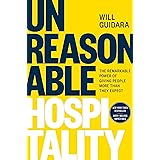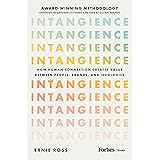After watching the insightful video above, it becomes clear that investing in gold is more than just buying a shiny asset. It is a strategic move that requires careful consideration. Gold has long been a symbol of wealth and security across cultures, acting as a crucial component in many investment portfolios.
For centuries, investors have turned to gold as a hedge against inflation and economic uncertainty. It often acts as a safe haven during turbulent times, providing stability when other assets might falter. Therefore, understanding the nuances of gold acquisition is essential for any savvy investor.
Understanding Why Gold Matters in Your Portfolio
Gold is frequently seen as a “crisis commodity.” This means its value often increases during periods of financial instability, political unrest, or high inflation. Think of gold as an anchor for your investment ship, providing stability when the economic seas get rough.
It acts as a diversifier, meaning it doesn’t always move in the same direction as stocks or bonds. Adding gold can help reduce the overall risk of your investment portfolio. This diversification is key to weathering market volatility over the long term.
Forms of Gold for Investment: Beyond Just Jewelry
The video highlights a critical distinction: gold purchased purely for investment in gold should ideally not be in the form of jewelry. This is primarily due to the “making charges” associated with jewelry, which are essentially a premium paid for craftsmanship and design.
Gold Bars and Coins
When your primary goal is investing in gold, bars and coins are often the most straightforward options. These forms typically command higher purity levels, usually 24 carats, and are valued almost entirely on their gold content.
They are like purchasing raw materials rather than a finished product, allowing you to avoid those additional making charges. These are excellent choices for investors focused purely on the metal’s intrinsic value and ease of storage.
Digital Gold and ETFs
Beyond physical gold, modern investment avenues offer digital alternatives. Digital gold allows you to buy and sell gold online, with the actual gold usually stored in secured vaults. This eliminates concerns about physical storage and insurance.
Gold Exchange Traded Funds (ETFs) are another popular option. These are financial instruments that track the price of gold, allowing you to invest without holding the physical metal. They offer liquidity and the convenience of trading like stocks.
Sovereign Gold Bonds (SGBs)
For investors in India, Sovereign Gold Bonds (SGBs) present a unique opportunity. These bonds are issued by the Reserve Bank of India on behalf of the government.
SGBs not only track the price of gold but also offer an additional interest payment semi-annually. They eliminate storage costs and offer tax benefits, making them a very attractive alternative for long-term gold investment.
The Gold Standard: Purity and Hallmarking Explained
Purity is paramount when investing in gold. The video correctly emphasizes checking the caratage and hallmark. Understanding these aspects protects you from purchasing impure gold.
The Importance of Caratage
Caratage measures the purity of gold. 24-carat gold is considered 99.9% pure, meaning it contains virtually no other metals. This is the standard for gold bars and coins, reflecting its highest intrinsic value.
22-carat gold, on the other hand, is approximately 91.6% pure, with the remaining percentage typically made up of alloys like copper or silver. These alloys add strength and durability, making 22-carat gold suitable for jewelry, which needs to withstand wear and tear. Always remember: higher carats mean higher purity and typically higher value for investment purposes.
The Role of BIS Hallmark
The Bureau of Indian Standards (BIS) hallmark is a crucial certification for gold purity. It’s like a quality assurance stamp for your gold purchase. This hallmark guarantees the purity of the gold you are buying, providing peace of mind.
The BIS hallmark comprises several components: the BIS logo, the purity in carats and fineness (e.g., 916 for 22K gold), the jeweler’s identification mark, and the hallmarking center’s mark. Always scrutinize this stamp and its date to confirm authenticity and purity, particularly for jewelry where mixtures are common.
Navigating Making Charges: A Key to Smart Gold Investment
Making charges are essentially the cost of converting raw gold into finished jewelry. These charges can range from 8% to 25% or even higher, depending on the intricacy of the design. When you sell jewelry, these making charges are typically not recovered, impacting your returns.
Consider making charges as a “premium for artistry.” If your goal is purely investment, paying for artistry reduces the efficiency of your gold investment. Opting for bars, coins, or digital forms bypasses this expense, ensuring your investment is directly tied to the gold’s market value.
Gold as a Long-Term Play: Patience Pays Off
The video points out that gold should always be viewed as a long-term investment, suggesting a minimum of 5 years to see desirable returns. This perspective is vital for managing expectations. Gold’s value doesn’t typically skyrocket overnight; instead, it offers steady appreciation and acts as a wealth preserver over extended periods.
Think of investing in gold as planting a tree rather than expecting instant fruit. Its stability and gradual growth are its primary strengths. It often performs best during market downturns, preserving capital when other assets are depreciating.
Key Considerations for Investing in Gold
When embarking on your gold investment journey, several factors warrant attention. Beyond purity and form, consider the liquidity of your chosen gold asset. Physical gold, while valuable, can sometimes be less liquid than digital options or SGBs.
Storage is another practical concern for physical gold. Secure storage, whether at home or in a bank locker, incurs costs and responsibilities. Digital gold and SGBs bypass these issues, offering convenience and security without physical handling. Always assess your specific needs and risk tolerance before making a choice.











